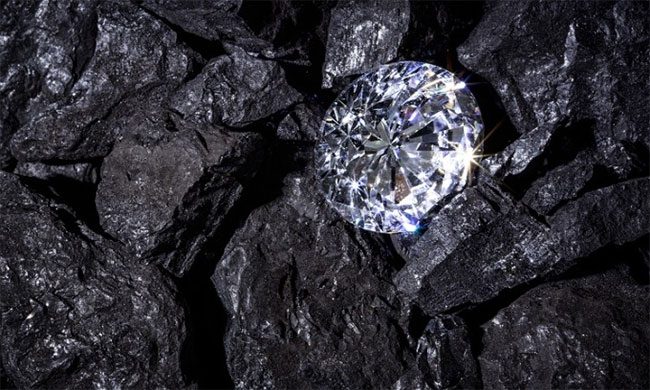Diamonds and peridot are two types of gemstones that can compete for the title of the deepest-forming gemstones beneath the Earth’s surface.
According to Lee Groat, a mineralogist at the University of British Columbia, the deepest-forming gemstone known to researchers is diamond, valued for its beauty, industrial applications, and the scientific information it contains. However, scientists do not yet fully understand how diamonds form. Laboratory tests indicate that diamonds crystallize only under extreme pressure. Most natural diamonds are found in the upper mantle at depths of 150 to 300 kilometers, where pressures can exceed 20,000 atmospheres.

Diamonds formed in the mantle billions of years ago before being pushed to the Earth’s surface. (Photo: Live Science)
For a long time, diamonds competed for the title of the deepest-formed gemstones alongside peridot. Peridot is the gemstone form of the mineral olivine, which makes up more than half of the upper mantle, extending from the base of the crust to a depth of 410 kilometers. However, in 2016, scientists described a collection of super-deep diamonds located 660 kilometers underground, and another batch of diamonds identified in 2021 was found to originate from a depth of 750 kilometers. “It is very difficult to determine whether diamonds or peridot is the deepest gemstone,” Groat said, as reported by Live Science on October 22.
To make these estimates, scientists study the crystal shape of diamonds as well as the inclusions, mineral fragments, or liquids trapped within the stones during their formation. The presence of minerals like bridgmanite and iron-nickel-carbon-sulfur suggests to researchers that super-deep diamonds likely formed in the lower mantle, which is composed of about 75% bridgmanite, and developed from liquid metal surrounded by methane. At these depths, pressures can exceed 235,000 atmospheres.
Diamonds are also believed to be extremely ancient. Some estimates indicate that the diamonds we see on Earth today formed around 3.5 billion years ago. Their long lifespan is due to the strength of the chemical bonds. Comprising carbon, diamonds are formed under high pressure, requiring significant force to break their bonds. Heating diamonds to over 900 degrees Celsius will cause them to transform into graphite.
Gemologists do not need to dig deep into the Earth to study diamonds, as the deepest that humans have ever drilled is the Kola Superdeep Borehole in Russia (12.6 km). Instead, diamonds are brought to the surface by a unique type of magma known as kimberlite. Kimberlite magma is often volatile, erupting at speeds of 30 m/s and carrying diamonds from the surrounding rock. In this way, gemstones formed billions of years ago can be erupted to the surface within months, or even hours.
Beyond their aesthetic value and natural hardness that can be used for blades, drill bits, and polishing powder, diamonds contain invaluable scientific information, according to Ananya Mallik, a petrologist at the University of Arizona. In many cases, diamonds are the only source that helps researchers understand the structure within the Earth and the processes occurring there.


















































